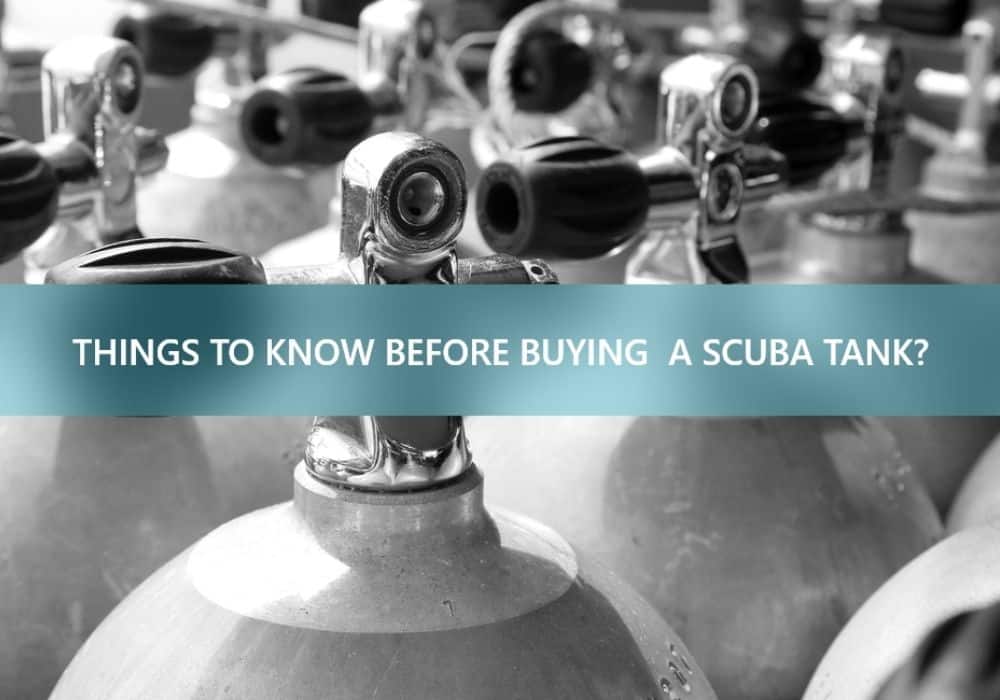If you’re thinking of purchasing a scuba tank, there are a few things you need to know. First, tanks come in different sizes and weights, so it’s important to choose the right one for your needs. Additionally, tanks need to be maintained and filled with the proper gas mixture to ensure your safety while diving. Here is a guide to help you make the right decision when buying a scuba tank.
What Is a Scuba Tank?
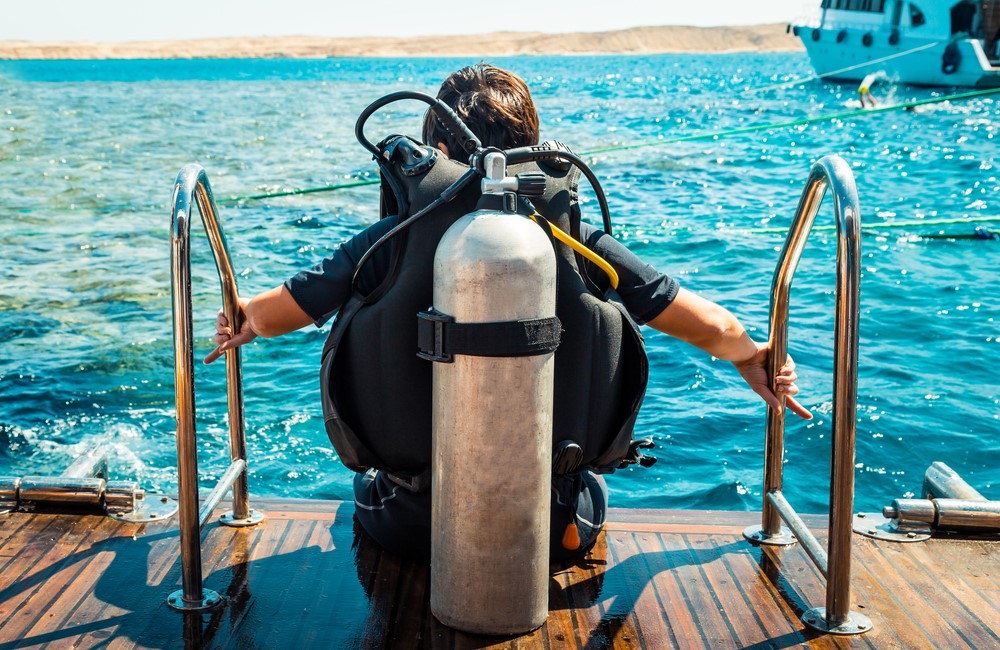
A scuba tank is a type of breathing apparatus that allows a person to breathe underwater. The tank is filled with air or another gas mixture, and the person wears a mouthpiece that is connected to the tank. When the person inhales, the air from the tank is drawn into their lungs.
Scuba tanks are used by both recreational divers and professionals, such as scientists and search-and-rescue personnel. Open-circuit tanks are the most common type; they release the exhaled air into the water.
Closed-circuit tanks recycle the air so that it can be reused multiple times. This makes closed-circuit tanks more efficient, but they are also more expensive. In addition, scuba diving can be dangerous if the diver does not have proper training or equipment.
For example, if a diver ascent too quickly, they can develop decompression sickness, which can be fatal. For this reason, it is important for anyone who wants to start scuba diving to take a certified training course from a qualified instructor.
Scuba diving can be an enjoyable and safe activity for people of all ages if they follow the proper safety guidelines.
How Do Scuba Tanks Work?
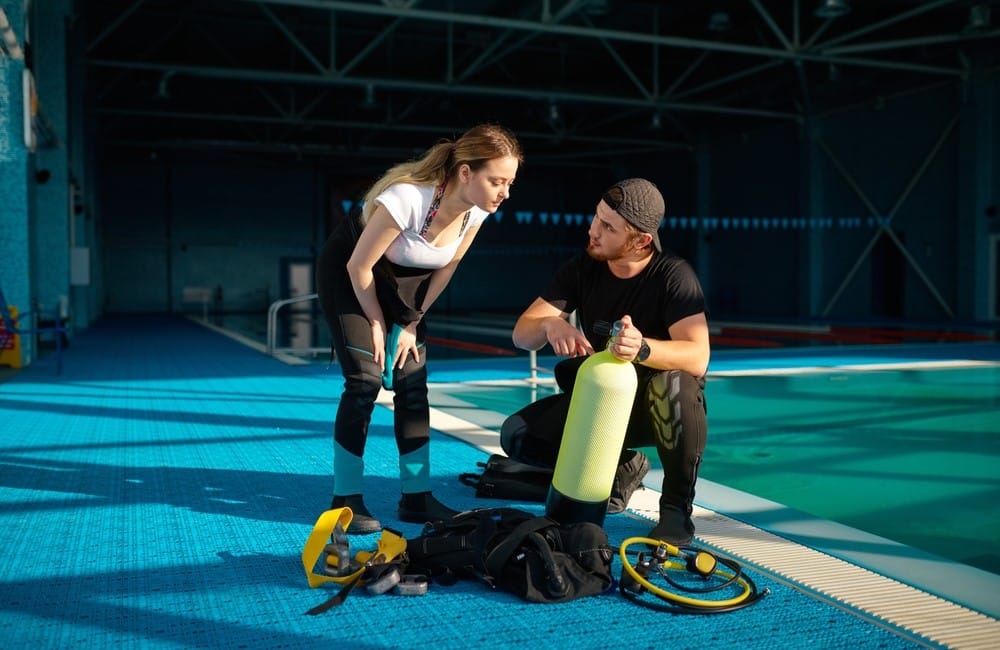
Scuba tanks are essential to diving, providing the air that divers need to breathe underwater. But how do scuba tanks work? Unlike a traditional air tank, which stores air under pressure, a scuba tank uses compressed gas to store air.
This makes the tank much smaller and lighter, making it more convenient for divers to carry. When the valve on a scuba tank is opened, the compressed air rushes out and is forced into the diver’s mouthpiece.
This provides the diver with a steady stream of air to breathe, even when they are deep underwater. So next time you take a dive, be sure to thank your scuba tank for keeping you safe.
Gas Inside of Scuba Tanks
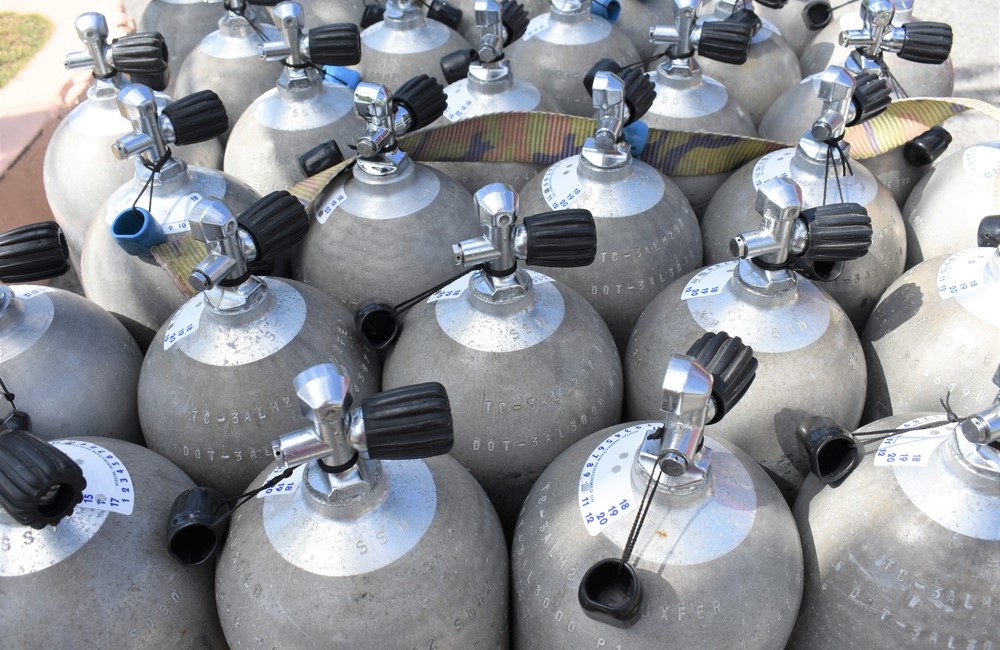
Scuba diving tanks are filled with either air or a mix of gases. The most common gas used in scuba diving is air, which is made up of 21% oxygen and 79% nitrogen. While this mix is safe for most people to breathe, it can cause problems at depths greater than 30 feet.
That’s because the nitrogen in the air starts to come out of the solution and form bubbles in the blood and tissues, a condition known as decompression sickness. To avoid this, divers who plan to dive deeper than 30 feet usually use a gas mix that contains more oxygen and less nitrogen.
The most common mix is 32% oxygen and 68% nitrogen. This mix is safe to dive into, with depths of 130 feet.
How Long Does a Scuba Tank Last?
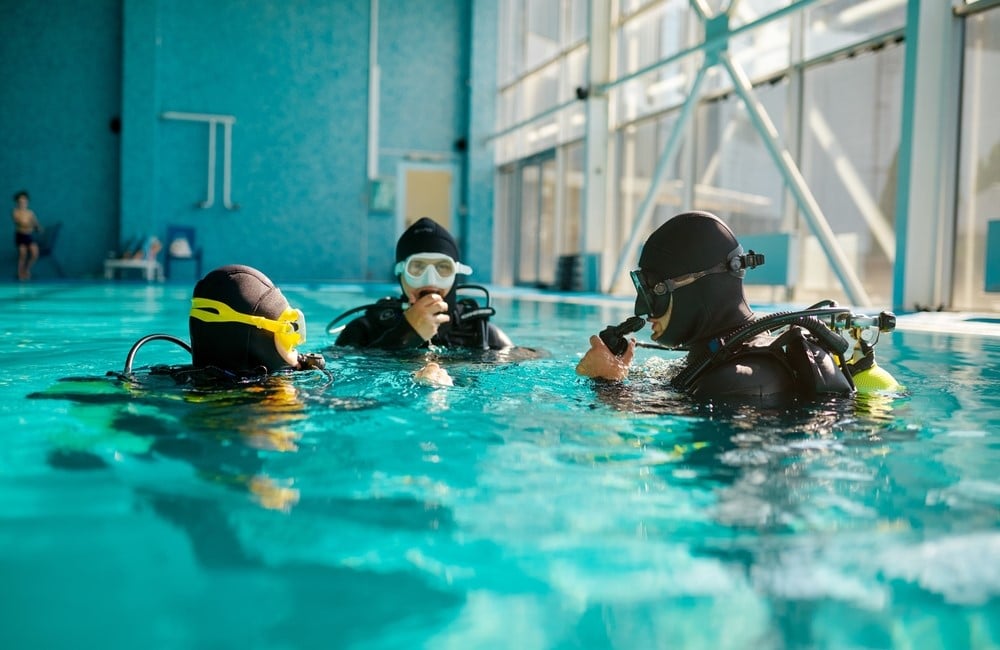
How long a scuba tank lasts depends on a number of factors, including the tank’s size, the type of valve it has, the diving conditions, and the diver’s breathing rate. Most scuba tanks are between 50 and 80 cubic feet in size.
The average scuba diver has a breathing rate of between 15 and 20 breaths per minute. Therefore, in ideal conditions, a 50 cubic-foot tank should last for about 40 minutes. However, in difficult conditions, such as when diving in cold water or at high altitudes, a tank may only last for 30 minutes. For these reasons, it’s always important to have more than one tank of air when going on a dive.
Different Sizes of Scuba Tanks
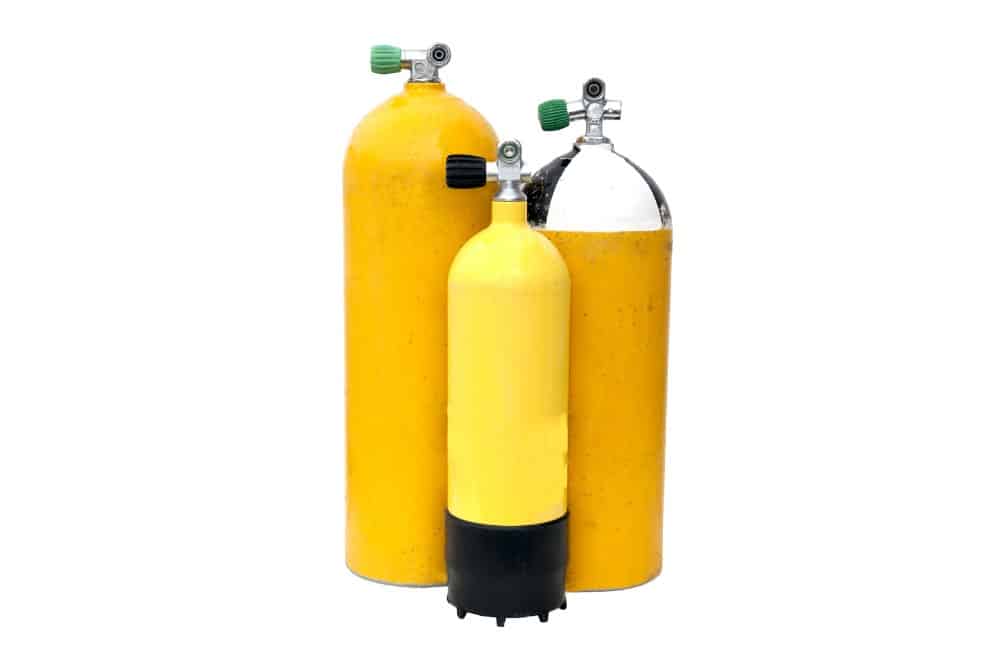
When choosing a scuba tank, it is important to consider the different available sizes. The most common size is the 80-cubic-foot tank, which recreational divers typically use. This size is adequate for most dives but may not be suitable for longer or deeper dives.
For this reason, many divers choose to use a larger tank, such as a 100-cubic-foot tank. These tanks can provide more air for extended periods of time, making them ideal for deeper dives. But larger tanks are also heavier and more difficult to transport, so they may not be suitable for everyone.
Ultimately, the best-size scuba tank is the one that meets the needs of the individual diver.
What Are Scuba Tanks Made Of?
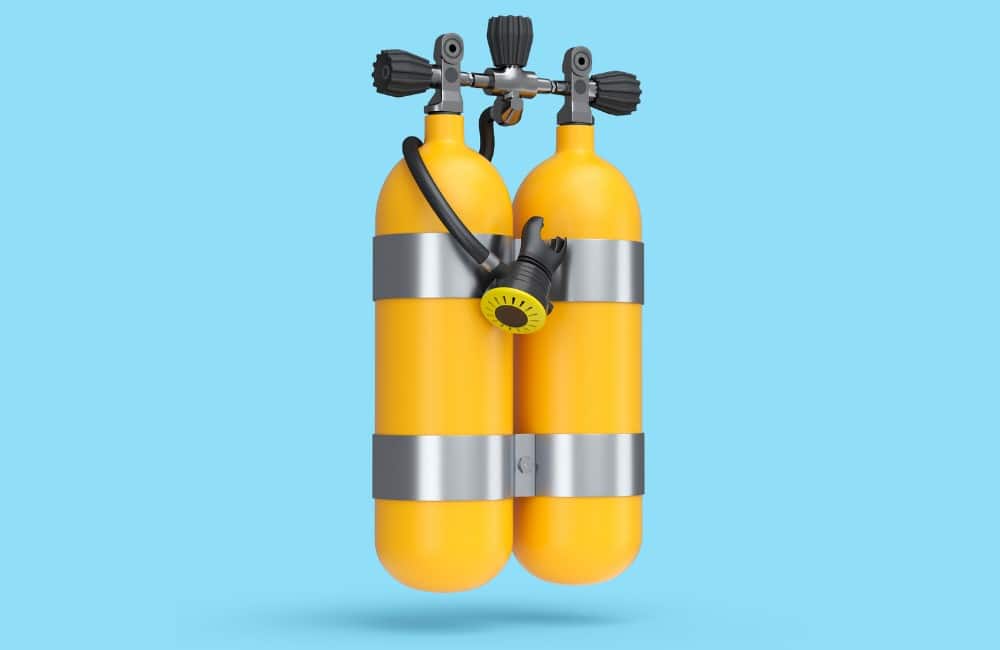
Scuba tanks are made of the following material:
Steel Tank
Scuba tanks are made of steel because it is one of the strongest materials available. Steel is not only incredibly strong, but it is also very resistant to corrosion. This makes it the perfect material for scuba tanks, which need to be able to withstand the high pressures of the ocean depths.
Steel is also a relatively affordable material, making it a good choice for scuba manufacturers. However, while other materials, such as aluminum, may be lighter weight, they are also more susceptible to damage and less durable than steel. For this reason, scuba tanks are almost exclusively made of steel.
Aluminum Tank
Scuba tanks are also made of aluminum because they are strong metal resistant to corrosion. Aluminum is also a good conductor of heat, which is important for keeping the air in the tank cool. The walls of a scuba tank are very thin, so aluminum is the best choice for preventing the tank from collapsing. Additionally, aluminum is much lighter than other metals, so it is easier to transport scuba tanks.
How Heavy Are Scuba Tanks?
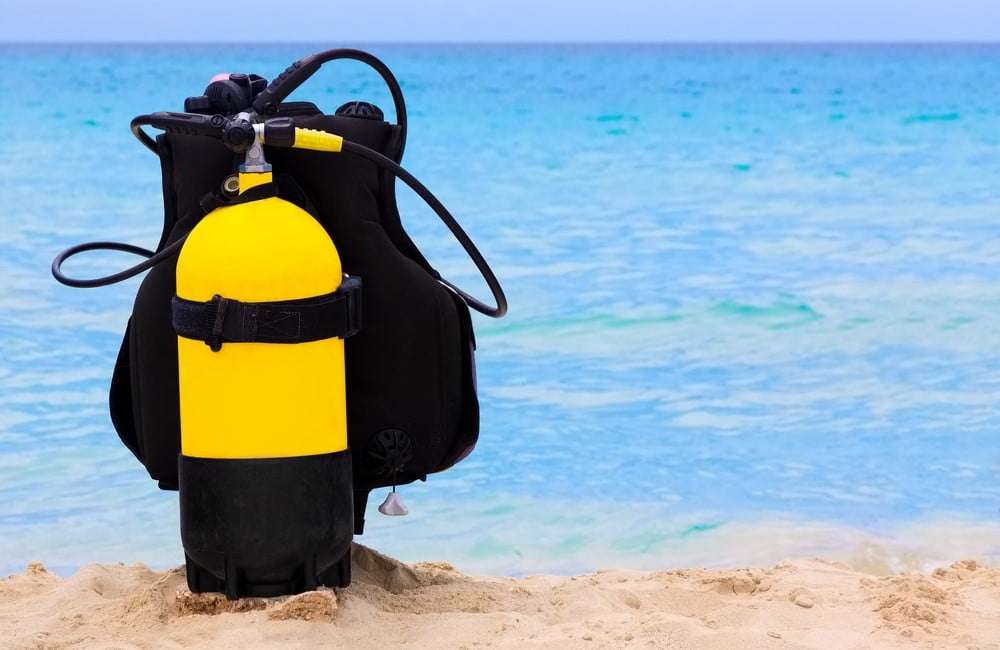
Most scuba tanks are made from aluminum and range in size from 24 inches to 40 inches tall and 8 to 10 inches in diameter. The weight of an empty scuba tank can range from 17 to 30 pounds, depending on the material it’s made from and its size.
Full scuba tanks can weigh anywhere from 70 to 120 pounds. The weight of a scuba tank varies depending on how much air is in it. For example, an aluminum 80-cubic-foot tank that’s half full weighs around 40 pounds.
Compare that with the same tank that’s full of air, which weighs close to 100 pounds. So, whether you’re diving with a group or exploring the underwater world solo, be sure to consider the weight of your scuba tank.
Are Scuba Tanks Buoyant?
Scuba tanks are often thought of as being buoyant, but this is not always the case. The level of buoyancy depends on the amount of air that is in the tank. When the tank is full, it is positively buoyant and will float to the surface.
However, as the air is used, the tank becomes increasingly negative buoyant and will sink. This is why scuba divers must carefully monitor their air levels and ensure they have enough to make it back to the surface.
If they run out of air, they will sink to the bottom and may have difficulty getting back to the surface. As a result, it is important to know how much air is in your tank and to plan your dive accordingly.
How Many Scuba Tanks Do You Need?
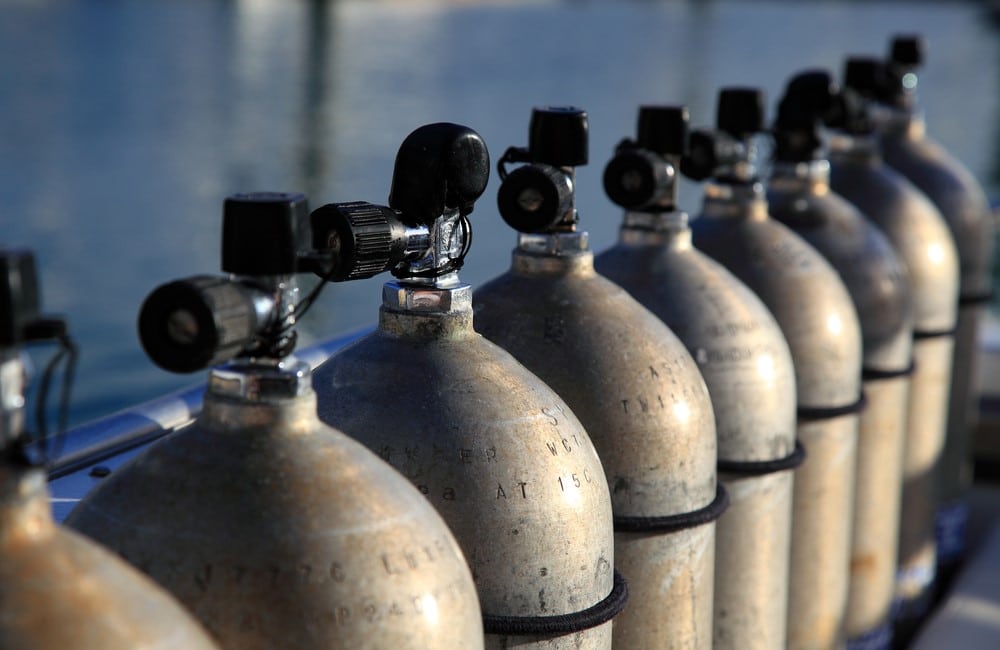
The answer depends on several factors, including your dive profile, dive depth, and breathing rate.
Generally speaking, most scuba divers will use between 1 and 2 tanks of air per dive. However, if you are diving in deep water or doing an extended dive, you may need three or more tanks. It is always best to err on the side of caution when it comes to air supply, so be sure to bring enough tanks for your dive group. You can ensure that everyone has a safe and enjoyable dive with a little planning.
Where to Buy a Scuba Tank
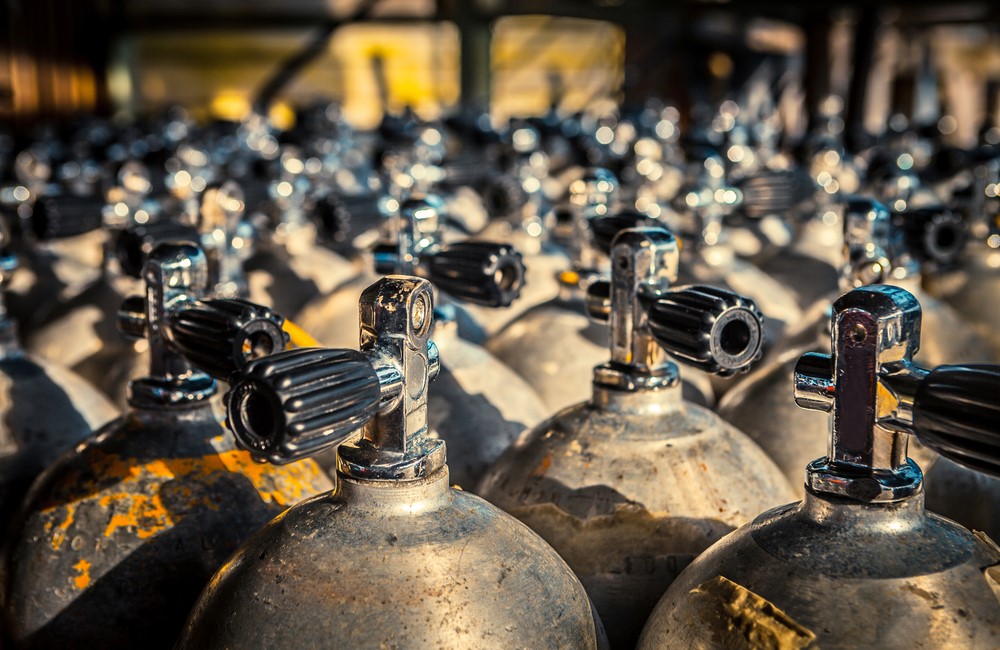
While many divers choose to rent scuba equipment, others prefer to purchase their own gear. But, of course, the scuba tank is one of the most important pieces of equipments for scuba diving. Scuba tanks are available for purchase from a variety of retailers, both online and in brick-and-mortar stores.
Experienced divers may prefer to purchase their scuba tanks from a dive shop or other specialist retailer, as these stores typically offer a wide selection of tanks from different manufacturers. However, those new to diving may find it more convenient to purchase their scuba tanks online, as there are many retailers that offer package deals on scuba gear.
No matter where you purchase your scuba tank, be sure to inspect it carefully before use to ensure that it is in good condition and compatible with your other dive gear.
How Much Do Scuba Tanks Cost?
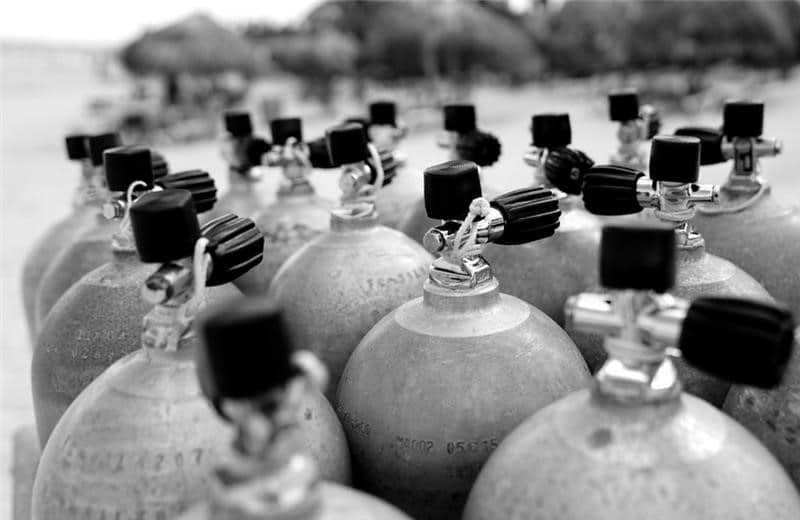
The cost of a scuba tank is not a major consideration for the average scuba enthusiast. Scuba tanks are relatively inexpensive, and most people who dive regularly will own their tanks. However, for those who are just starting out, the cost of a scuba tank can be a significant barrier to entry.
A typical scuba tank will cost between $100 and $200, and many diving centers require you to rent or purchase your own tank. In addition, you will also need to pay for refills, which can add up over time. For those who are serious about diving, however, the cost of a scuba tank is a small price to pay for the experience of exploring the underwater world.
How are Scuba Tanks Filled?
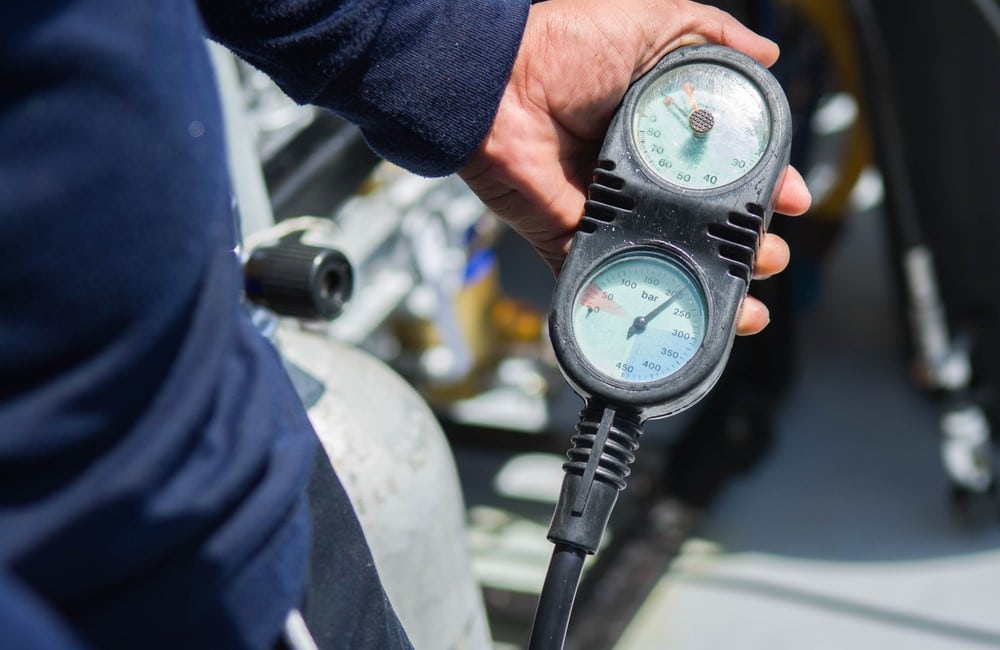
Following are some of the most asked questions about the scuba tank filling. Take a look:
Can You Use an Air Compressor to Fill a Scuba Tank?
The answer is yes, but there are a few things you need to know first.
- First, scuba tanks are much larger than the average air compressor, so you’ll need a machine that can generate enough pressure to fill the tank.
- Second, you’ll need to make sure that the air compressor is clean and free of oil and water, as these contaminants can damage the scuba tank.
- Finally, you’ll need to monitor the pressure carefully while filling the tank, as overfilling can be dangerous.
If you follow these guidelines, you can safely use an air compressor to fill a scuba tank.
What Pressure Are Scuba Tanks Filled To?
Scuba tanks are typically filled to a pressure of 3000 pounds per square inch (PSI). This is much higher than the atmospheric pressure at sea level, which is only 14.7 PSI. The high pressure inside the scuba tank allows divers to breathe normally underwater for extended periods of time.
When a scuba tank is initially filled, the compressor pumps air into the tank until it reaches the desired PSI. Once the desired pressure is reached, the compressor is shut off, and a valve is opened to release any excess air. This helps to ensure that the tank does not become overpressurized, which could be dangerous for both the diver and the person filling the tank.
Where to Refill Scuba Tanks
Most certified divers know that they can refill their scuba tanks at any dive center or resort. However, many divers don’t realize that there are many other places where they can get their tanks filled.
Many hardware stores, for example, have compressors that can be used to fill scuba tanks. In addition, some fire departments offer scuba tank refills to the public. While the cost of a refill may be slightly higher at these locations, it can be worth it for divers looking for a convenient way to fill their tanks.
Maintaining a Scuba Tank
Maintaining your scuba tank is essential for keeping it in good condition and ensuring it works properly when you need it.
You can do a few different things to maintain your scuba tank. First, make sure to keep it clean. You can wash the outside of the tank with mild soap and water, and you should also regularly inspect it for any cracks or damage.
It’s also important to keep your scuba tank full. This may seem like a no-brainer, but letting the air get too low can damage the tank. Checking the pressure before each dive is best, and top off the air as needed.
Finally, you should have your scuba tank hydrostatically tested every two years. This test checks for any leaks or other issues with the tank, and it’s essential to make sure that your equipment is in good condition before using it.
By following these simple tips, you can keep your scuba tank in great shape and ensure that you’re always ready for your next adventure.
Where to Get Scuba Tanks Hydro Tested
You can get your scuba tanks hydro-tested in a few different places. The most convenient option is usually to go to a local dive shop or resort that offers the service. However, you can also mail your tank to a certified testing facility.
Hydro testing is an important safety measure for scuba tanks. It ensures that the tank is free of any cracks or leaks that could cause problems underwater. Most tanks need to be tested every five years, although some may need to be tested more frequently if they are used frequently or subject to wear and tear.
Getting your tank hydro-tested is relatively simple and straightforward. You will need to make an appointment with the testing facility and then drop off your tank on the day of your appointment. The whole process usually takes less than an hour, and you will be able to pick up your tank afterward.
Hydro testing is an important part of maintaining your scuba gear. By getting your tanks tested regularly, you can help to ensure your safety while diving.
Scuba Tank Safety
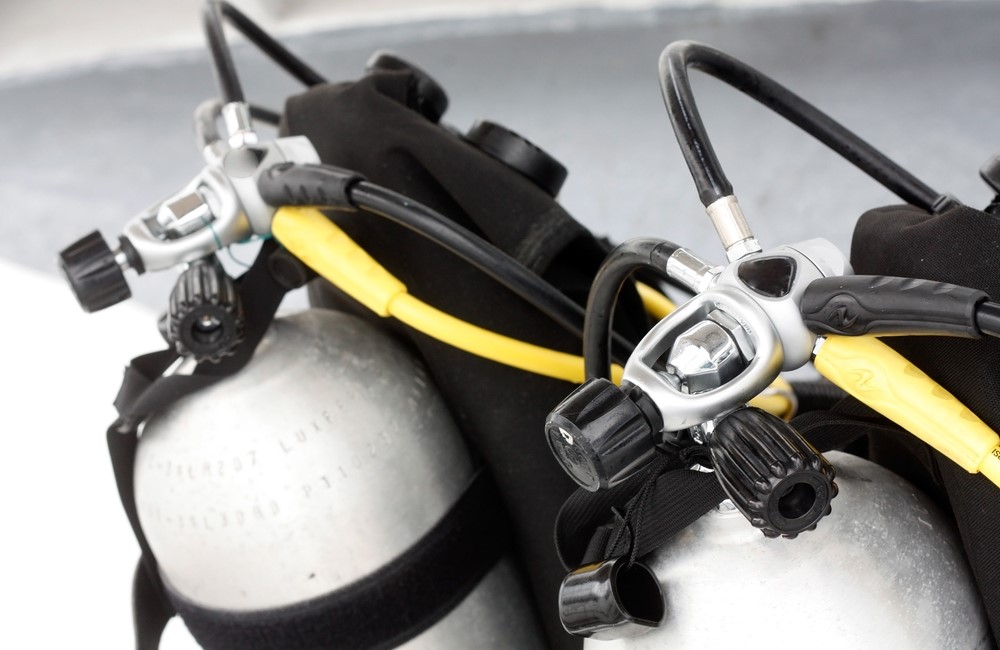
The following are the most asked questions regarding the safety of scuba tanks:
Are Scuba Tanks Explosive?
Scuba tanks are most typically made of aluminum or steel, both of which are non-explosive materials. The tanks are filled with a compressed air mixture, which is also not flammable or explosive.
However, it’s important to remember that scuba tanks are under enormous pressure – up to 3,000 pounds per square inch. If the tank wall is breached, that pressure can be released very suddenly and with great force. While the metal itself will not explode, the sudden release of pressure can cause serious injury if you’re nearby.
For this reason, it’s important always to handle scuba tanks with care and keep them away from heat sources that could cause a breach in the tank wall. However, when used correctly, scuba tanks pose no risk of explosion.
Are Scuba Tanks Flammable?
Are scuba tanks flammable? It’s a question that many scuba divers have, but the answer isn’t as straightforward as you might think. The fact is, scuba tanks are made of several different materials, each with its own flammability rating. The most common type of scuba tank is made of aluminum, which has a relatively low flammability rating.
However, scuba tanks can also be made of steel or composite materials, both of which are much more flammable. So while it’s technically possible for a scuba tank to catch fire, it’s not very likely. In fact, you’re more likely to be injured by the explosion of a full scuba tank than by the tank itself catching fire.
So if you’re ever worried about your safety while diving, remember that your scuba tank is one of the least likely things to cause you harm.
Conclusion
So, before you take the plunge and buy your first scuba tank, consider all the factors involved in making the right purchase for you. By doing your homework and considering all the different aspects of diving tanks, you can select the perfect one for your needs and be well on your way to enjoying this exhilarating sport.
